Kolkata, WEST BENGAL :
Equipped with the knowledge of hand-painted posters, in 1981, Mahmood left for Siliguri, a fairly less-competitive market, in search of a job. After an illustrious career, the 65-year-old, locally known as ‘Painter Mahmood’, lives in a nondescript, barely-lit house in Kolkata’s Crematorium Street.
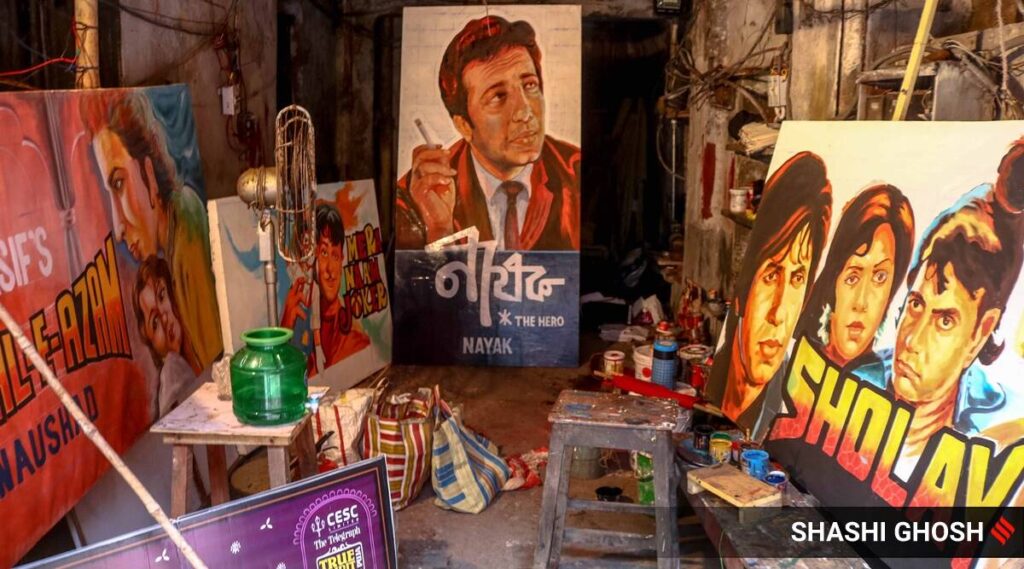
There was a time when people would worship film stars, a time when cinemas of all languages would give birth to extraordinary heroes and heroines. If it was Rajesh Khanna, Amitabh Bachchan, Hema Malini and Rekha in Bollywood, their counterparts Uttam Kumar, Shubhendu Chatterjee, Suchitra Sen and Supriya Debi were dominating the Bengali cine world.
While onscreen, dialogues like main aaj bhi phenke hue paise nahi uthata (Amitabh Bachchan in Deewar, 1975) and korbo, albaat korbo, I will go to the top, the top, the top (Uttam Kumar in Nayak, 1966) turned the actors into superstars, off screen, their larger-than-life images would be drawn by the hand-painted cutouts and posters.
Those who have seen the frenzy outside single-screen cinema halls back in those days would remember how fans would garland a hero’s cutout and throw slippers at a villain’s poster.
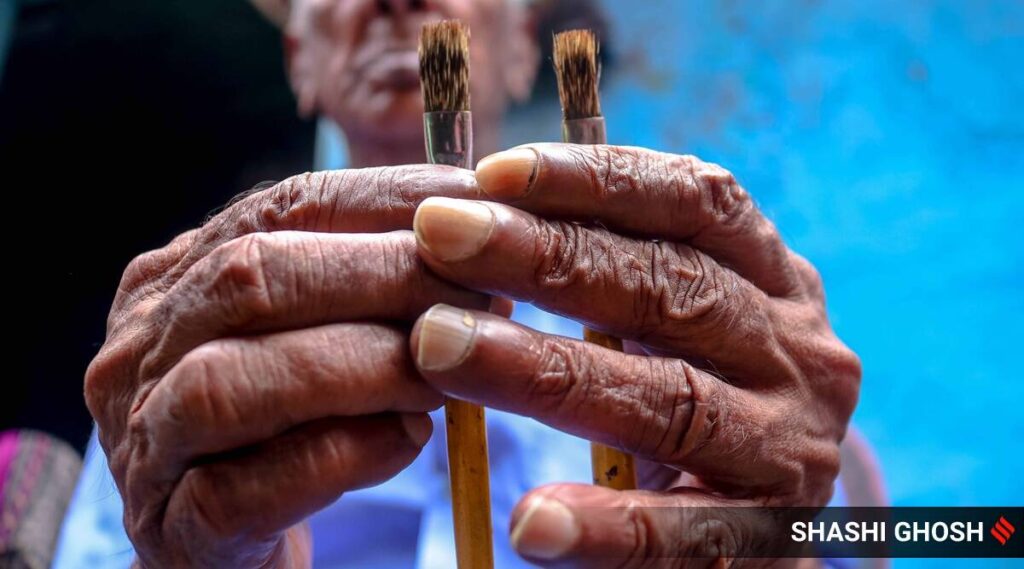
With the advent of digital printing, however, the art of hand-painting film posters first took a backseat and then died a natural death and with that people like Mahmood Alam found themselves jobless.
After an illustrious career, 65-year-old Mahmood, locally known as ‘Painter Mahmood’, lives in a nondescript, barely-lit house in Kolkata’s Crematorium Street, which got its name from the now-defunct gas crematorium, the only-of-its-kind in the city. The crematorium and Mahmood have an uncanny similarity — both were celebrated in the past, but now barely manage to attract attention.
Mahmood, arguably the last such artist in Kolkata, was around 17-year-old when he took interest in learning the art of making film posters. “I was still a student back then, at Islamia High School, when studios in Kolkata would offer classes on painting banners and posters. I loved the film world and enjoyed painting too so I learnt the art at a nearby studio.”
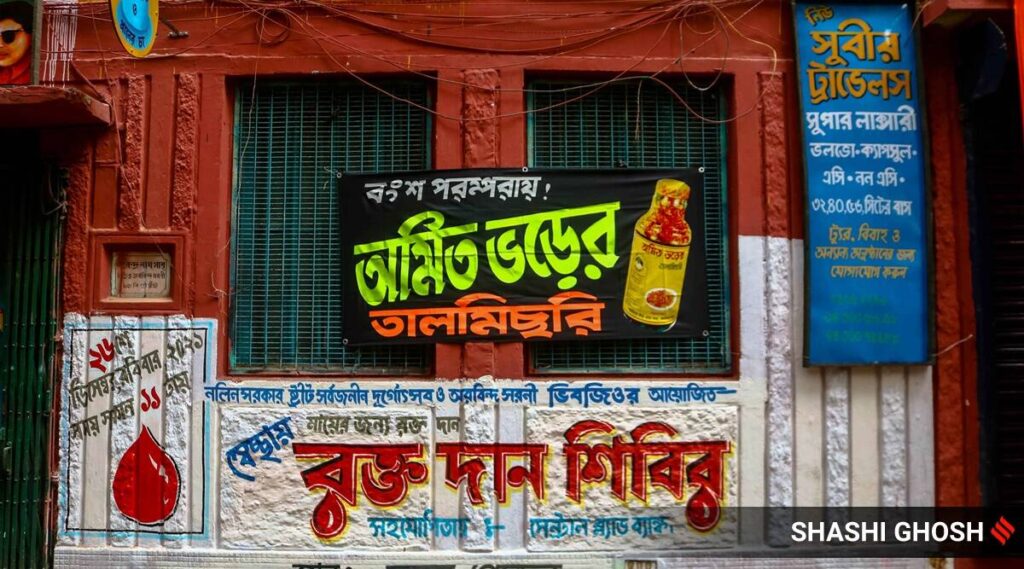
Equipped with the knowledge of hand-painted posters, in 1981, Mahmood left for Siliguri, a fairly less-competitive market, in search of a job. Back in those days, much before the murky tales of the industry flooded primetimes of news channels, Bollywood was considered to be a platform for those with a dream.
The superhit movie Andha Kanoon had helped two such dreamers — Rajnikanth, who debuted in Bollywood with this movie, and Mahmood, who made a banner for the movie in Siliguri.
Although there was a brief period of lull for a month, there was no looking back after that one poster, says Mahmood. “After successfully making one poster, I was confident I would find employment and soon, the owner of Jhankar Hall in Siliguri gave me work and provided space in the premises of the hall to set up my own studio. I even had employees to assist me,” boasted Mahmood.
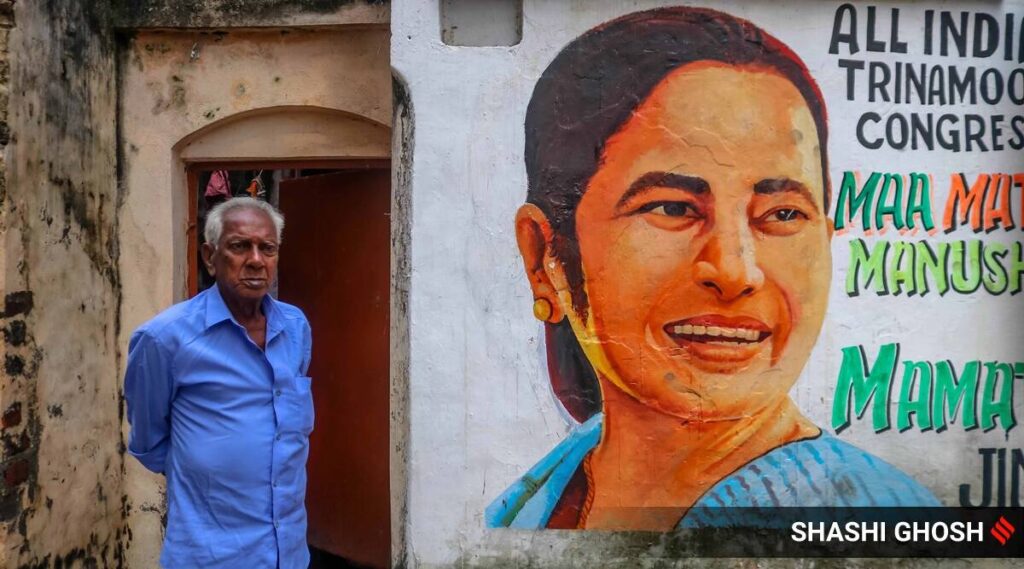
His fame rose and the words of his artistry spread till Nepal’s Kathmandu. “In those days, Sambhu Pradhan was a big Nepali director. He got in touch with me and asked me to make posters for his films. He even asked me to leave Siliguri and stay in Kathmandu but I refused. However, I started making posters for Nepali films too.”
Talking about the process of making the cutouts and posters, Mahmood said the trick was to make a graph. “We would have a photograph for reference on which we would draw a graph. The same number of grids would be first drawn on a blank poster or a cutout and then the images would be hand-painted,” he said.
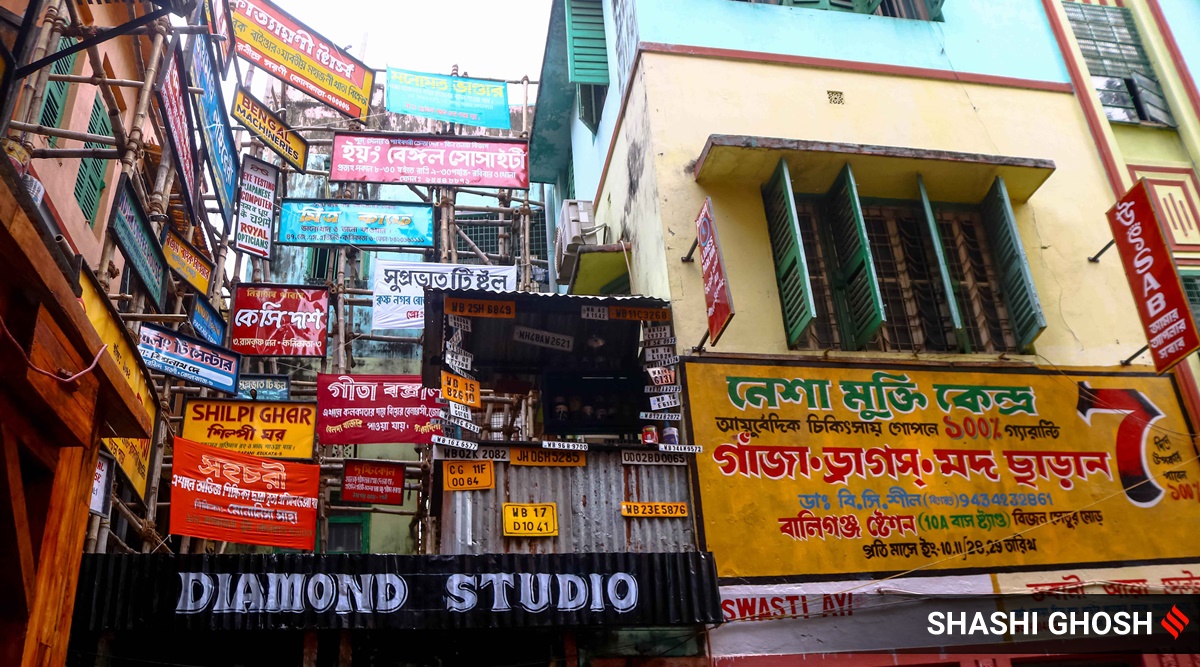
While Mahmood has painted cutouts of almost all actors of that time, his personal favourite was Dilip Kumar. “Nobody matched Dilip sahab. The aura around him was enough to pull the crowd and I loved making his cutouts the most,” he said.
All was well for Mahmood until the turn of the century ushered in a wave of development which did result in a fresh air but left many like Mahmood jobless. “I still tried my best. Shifted to banners and posters of shops but the going was getting tough and finally in 2010, I came back to Kolkata,” he said.
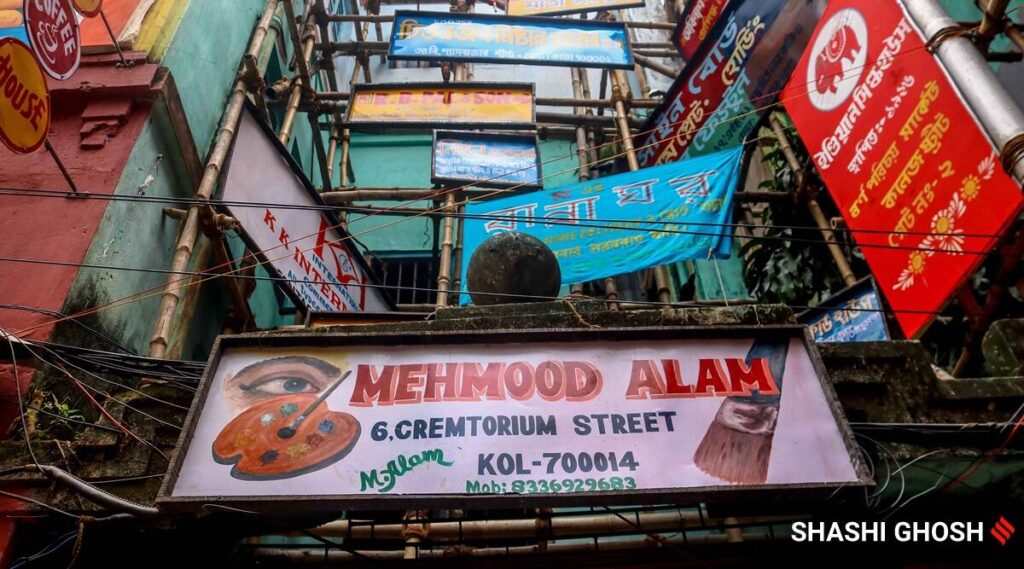
Now, Mahmood finds work only when he is asked to paint a wall with some political graffiti. But no work is small, the artist says. “One day I was painting a graffiti of Mamata Banerjee on a wall when someone clicked a photograph. I called him near and said why only click the picture of the painting? Don’t you want to show the world who painted it? I don’t know what happened and he said that he will get work for me. After a few days, he came back and said he’s found work for me at a Durga Puja pandal,” he said.
Mahmood is once again back in the limelight after he hand-painted hoardings and posters for the theme-based Durga Puja at Nalin Sarkar Street in north Kolkata this year. Although Mahmood’s works won the puja committee accolades, the painter continues to live a life in penury.
source: http://www.indianexpress.com / The Indian Express / Home> Lifestyle> Art & Culture / by Utsav Basu, Kolkata / October 28th, 2021








